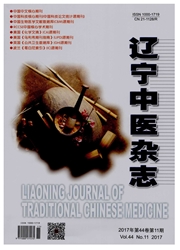

 中文摘要:
中文摘要:
目的:探索实验性自身免疫性脑脊髓炎(EAE)小鼠中枢神经系统不同部位间的病理变化,为疾病机制探索及治疗研究提供实验取材依据。方法:采用PLP139-151和百日咳毒素诱导SJL小鼠建立EAE模型,至发病高峰期分别取小鼠的大脑、小脑、脑干、颈髓、胸髓、腰髓进行HE染色及LFB髓鞘染色观察,比较各部位组织病理变化和髓鞘脱失情况。结果:脑干和大脑的病理变化显著,具有明显的血管袖套样炎性细胞浸润,小脑病理变化较小。三段脊髓均呈现出明显的病理变化,并以颈段和腰段最显著,出现明显的炎性细胞浸润和神经元细胞空泡状坏死。结论:在评判SJL小鼠EAE模型的病理特征时,脑干、大脑、颈髓和腰髓是最具特征的病变部位。
 英文摘要:
英文摘要:
Objective: To explore the pathological changes of different parts in the central nervous system of mice with experimental autoimmune( EAE). Methods: SJL/J mice were induced by PLP139-151 peptide and pertussis toxin to establish EAE model. Tissues of brain,cerebellum,brainstem,cervical cord,thoracic cord and lumbar cord were harvested at disease peak,which were used for hematoxylin-eosin( HE) and luxol fast blue( LFB) staining. Results: Brain stem and brain showed more seriously pathological changes compared to cerebellum,with obvious vascular cuffing infiltration of inflammatory cells. All three sections of spinal cord showed obvious pathological changes,of which the most serious were cervical cord and lumbar cord with apparent inflammatory cell infiltration and neurons vacuolar necrosis. Conclusion: Brain stem,brain,cervical cord and lumbar cord show the most typically pathological lesions in SJL mouse.
 同期刊论文项目
同期刊论文项目
 同项目期刊论文
同项目期刊论文
 期刊信息
期刊信息
